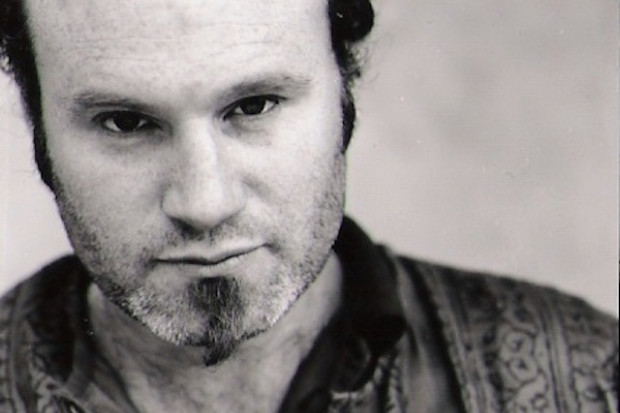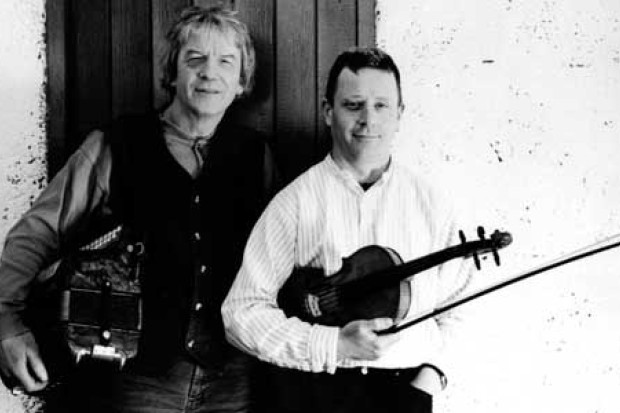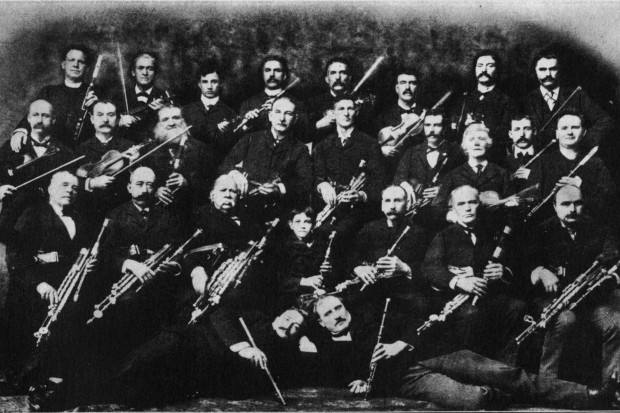Exotica Anonymous
In an academic or scholarly essay, one of the least attractive tactics is to avoid naming a layman who has seminally contributed to the debate. It might be called the ‘Tactic of the Ostrich’ – where one keeps the head safely in the sand – but it may equally be based on intellectual snobbery, i.e. that lay findings are beneath contempt. As a layman who regularly intrudes on academic areas, I am familiar with this tactic. I produced my Atlantean trilogy of films in 1984 and a book of the same name in 1986. In these, I took the connections between sean-nós singing and North Africa as a starting point for a cross-cultural comparison between lands connected by the Atlantic seaways. Academic silence greeted it, with one honourable exception: Dr Michael Ryan. Since then I have noticed specific aspects of my speculations gradually gaining respect, mainly without attribution. I have in mind the fairly recent examples of Simon James’ The Atlantic Celts: Myth or Illusion (1999) and Barry Cunliffe’s Facing the Ocean (2001), although I am assured by these scholars that they never heard of my work.
By contrast, a fine example of the ostrich approach appeared in the last issue of JMI (‘Sean-Nós Singing and Exoticism’, Jan/Feb 2003). In an otherwise generous review of CDs featuring the sean-nós singing talents of Sarah Griallais and Josie MacDonncha, the reviewer attacked the ideas of the late Seán Ó Riada (named) and myself (unnamed). Our ideas were described as ‘exoticisation’ on the one hand and as ‘cultural nationalism’ on the other.
Not being an academic I will compliment the reviewer by naming him: Lillis Ó Laoire, who is an academic by virtue of a professional qualification in the area of Irish studies but not, as far as I am aware, in any area of music. Nevertheless, in his review, he expanded what was otherwise a fine piece of praise for the above singers into a trenchant comment on the political context of sean-nós singing itself, together with a condemnation of what he regards as misguided interpretations of its place in the world of music.
Not many years ago a colleague of Mr Ó Laoire in the University of Limerick publicly accused Seán Ó Riada of having become ‘too ensnared in nationalist ideology’. His name was Mícheál Ó Súilleabháin, a talented performer and composer, who nevertheless generously credited the influence of Ó Riada on his own musical development. In the JMI CD review in question, however, Mr Ó Laoire gave Ó Riada (and myself) credit for nothing but ‘myth-making’, ‘ill-suited terminology’, ‘an imaginary’, ‘an impressionistic overview’, and – perhaps to his mind most damagingly – ‘cultural nationalism’. If Ó Riada were alive today he would be saddened at this revival of a smear tactic that was popular in the seventies and eighties, being a code for Provo fellow-travellers. Alternatively the late composer might shred Mr Ó Laoire as surgically as many years ago he shredded Charles Acton, the music critic of the Irish Times, in part by pointing out that the latter represented a mere amateur perspective, i.e. the imitative classical music practices of the Pale. Ironically, Charles Acton was a great fan of my Atlantean thesis.
It seems to me a paradox that a body of research that clearly demonstrates the universal dimension of a form of folk art such as sean-nós singing could be dismissed as narrowly ‘nationalistic’ or as ‘exoticisation’. This is what Mr Ó Laoire did.
Seán Ó Riada used his considerable musical intuition – as well as a lot of hard graft – to show that the Conamara form of this singing had resonances with forms outside the narrow confines of Europe. A willing accessory to this heresy, I developed his ideas in my Atlantean pursuit. More recently, I took examples of Conamara sean-nós as far as Tatarstan (Russian Federation) and had it recognised by performers there as almost identical to their own. I played Tatar sean-nós songs to Conamara singers; even they unanimously declared it to be musically identical to their own. The evidence showed that Conamara singers were not a ghettoised, introspective or politically inspired aberration; they shared a tradition with peoples of whom people they knew nothing and with whom they had no apparent cultural contact. Such findings are what Mr Ó Laoire described as ‘exoticisation’. He dismissed the results of this practical, contemporary research and evidence (the ‘new and contemporary insights’ that he demanded in his review) as ‘placing it in one hermetic, ahistorical, timeless category, rendering it mysterious, eastern and non-European’. In other words, Mr Ó Laoire entirely missed the point – the point being that Conamara sean-nós represents an ancient musical form which has its equivalents in other peripheral areas around the world, and whose only apparent connection is the sea, the rivers and a general maritime perspective. This perspective, with its undermining of the ‘Celtic race’ nonsense is the exact opposite of the narrow nationalist perspective which Ó Laoire attributes to it.
In Ó Laoire’s review, I felt there was a confusing sense of non-sequitur, which puzzled me until I came across, on the internet, a recently posted excerpt from an essay co-written by Ó Laoire and one Anthony McCann. It is entitled ‘Raising One Higher than the Other: the Hierarchy of Tradition in Representations of Gaelic and English Language Song in Ireland’ (www.beyondthecommons.com/twotrads.html) and is to be published by the University Press of Mississippi this year in a collection entitled Global Pop, Local Language, edited by Harris M. Berger, Moshe Thomas Lieber, and Michael T. Carroll.
In this piece the authors describe what they perceive as a hierarchical and antipathetic relationship between singing traditions in the Irish and English languages, i.e. the two traditions are quite different and that the Irish is superior to the English. In essence the writers blame this antipathy exclusively on the body of attitudes roughly represented by the Gaelic League, and they diminish any interjection by the facts of history. For example, ‘the decline of the Irish language [due] to systemic anglicisation, enacted by the British administration over hundreds of years of colonization’ is not put forward as an historical fact but rather ‘the common attribution by cultural nationalists’. Such sentences, it would seem to me, are loaded with bias.
The authors claim that ‘the binary opposition between the Irish and English languages was established in the discourses of Irish cultural nationalism’. In other words the ‘Irish’ Irish only imagined a cultural tension between themselves and their conquerors. This is ahistorical nonsense. The authors are clearly avoiding the existence of hundred of formal statutes enacted from the sixteenth century onwards which were designed to ethnically, linguistically, even fashionably cleanse this island. See the writings of Douglas Hyde (The History of Irish Literature) or Seán de Fréine (The Great Silence).
However, having to their own satisfaction identified the real villains – ‘cultural nationalists’ – the authors then project their Irish/English tension onto the reality of differences between the various styles of Irish sean-nós singing. In these complex matters they use the Conamara style of singing as a stick with which to beat the villains. Despite the leaps of logic in the essay, it is a well-researched polemic and includes attitudes towards ‘Celticism’ and ‘romantic nationalism’ which I have long shared. However, it also denigrates the writings of Liam Mac Con Iomaire, Brian Ó Rourke and Tomás Ó Canainn who are, in my opinion, at least as au fait with the intricacies of sean-nós singing as are the other two authors. Indeed, Mac Con Iomaire was called upon to write an introduction to the sleeve notes of Ó Laoire’s own CD (Bláth Gach Géag dá dTig, Cló Iar-Chonnachta, 1996).
In their essay ‘Raising One Higher than the Other’, Ó Laoire and McCann write:
‘Proponents of the two-traditions hypothesis construct an image of a Gaelic song tradition that is absolutely different and separate from an English language counterpart. The Gaelic song tradition is constructed primarily as not-English (language).’
Dismissing this ‘two-traditions hypothesis’, as Ó Laoire and McCann do, clearly implies its opposite, i.e. that they believe there is no substantial or significant difference between Gaelic or English musical traditions! It would need more than academic posturing to persuade a person of commonsense that this position is tenable. Ironically ‘Raising One Higher than the Other’ appears to be a mutant development of Conor Cruise O’Brien’s ‘two-nations’ theory in reverse, in that the authors argue against a ‘two-tradition’ theory. It is as, I have suggested, confused.
When Mr Ó Laoire’s solo run, the JMI CD review, is seen in the context of the longer essay, it becomes clear that the review’s unevenness is the result of importing, as simplistic judgements, what are elaborate arguments in his longer essay. However, no amount of learned footnotes can conceal the lack of objectivity in either piece. The good news is that in the longer essay I am formally brought into Mr Ó Laoire’s sights, i.e. my name and research are quoted, and in good company too: Edward Said’s Orientalism, Seán Ó Riada’s dissertations on style, Fanny Feehan’s convictions, Ó Canainn’s comments, are all named as suspect. I am accused of echoing ‘discredited’ eighteenth- and nineteenth-century antiquarian assertions. ‘Though not obviously stated,’ Ó Laoire and McCann say, ‘there is a strong anti-English subtext to these arguments’. I am included in the accusation that ‘English language singing … is represented as vulgar and European’. Even that old eighteenth-century whipping boy, General Vallancey and his Phoenician theories, is invoked to join the defendants in the dock.
In the JMI CD review, Mr Ó Laoire reveals a problem he has with what he calls ‘an excessive preoccupation’ with the technique of ‘melisma’, meaning the ornamentation, the grace-notes, that are a fundamental and distinctive feature of Conamara sean-nós singing. This is in contrast to the glottal stop which features in the Munster style, or the pleasant and unadorned simplicity of the Donegal songs – of which Mr Ó Laoire is a well-known performer.
Interestingly, Mr Ó Laoire, who comes from Gortahork in Donegel, did not become interested in any form of sean-nós until he attended University in Galway. Does this explain why he finds that most complex of sean-nós forms, the Conamara style, problematic? For what else could be behind the following sentiment in ‘Raising One Higher than the Other’: ‘an excessive preoccupation with melisma in particular has led to the neglect of other features and of styles of singing in which such tropes are not important’. That is to say, Donegal singing. Could this opinion be stimulated by the recent resurgence of Conamara singers, as evidenced by their sweeping the boards at last year’s Oireachtas competition? This after a hiatus in the early nineties during which Mr Ó Laoire’s style actually prospered at occasions in Dublin and Waterford.
This impression of resentment at a perceived imbalance of adjudication is confirmed by the following comment, also contained in the longer essay:
‘Singers from the region of Connemara and the western islands have in the past been deemed by judges to be the possessors of the true and authentic art of sean-nós, and this perspective was, we suggest, profoundly influenced by the Myth of the West and the exoticization of the Western Gaeltacht. That the judges hold this view is reflected in the overwhelming number of national winners from Connemara and the islands, and in the highly prescriptive pronouncements of adjudicators.’
Indeed, Mr Ó Laoire confirms that his resentment has a long history when he reports that ‘in the 1970s, Northern singers complained that their claims to being authentic traditional singers had been denounced publicly by adjudicators’.
Despite Mr Ó Laoire’s generous CD review of the two Conamara sean-nós singers (both prizewinners at the Oireachtas) it is clear from the longer essay that his attitude towards their singing style and its pre-eminence is anything but benevolent; indeed, it seems to reveal a very unscholarly bias. It also invokes the jaded revisionist argument which attributed an ongoing anti-English sentiment to champions of all Irish language (but especially Conamara) singing.
Although the longer essay complains of the favoured predominance of the Conamara style, in his CD review itself there is the contradictory suggestion of a felt or alleged inferiority complex of Conamara singers towards other styles. This is pure balderdash. Twenty-three years ago Seán Jack McDonncha (Josie’s father and, with Darach Ó Catháin and Máire Áine one of the finest exponents of the Conamara style) said to me about Munster songs: ‘Níl aon ceol ag an dream sin’ (‘That crowd has no music’). He did not give an opinion on Donegal. Seán Jack exaggerated, of course, to distinguish between his own beloved Conamara style and the rest. However, I tend to agree with the formal distinction: Munster and Tír Chonaill songs are, respectively, ‘operatic’ and ‘nice’, both being quite at home in revivalist drawing rooms. Conamara songs are, at best, that uncomfortable thing: an intimate art – akin to jazz singing – which falls uneasily on suburban ears. They can also be delivered in an unsentimental, almost harsh, manner which appears to be the antithesis of Mr Ó Laoire’s predelictions.
Precisely what Mr Ó Laoire calls the narrower compass of Conamara singing, its non-reliance on dynamics or ‘vibrato and diminuendo’ (Ó Riada’s terms, which Ó Laoire deems ‘inappropriate’) and what the music can do within its ancient pentatonic limitations – especially with the aid of his unapproved ‘melisma’ – are what make the Conamara style unique in the musical life of this island. It is also a style that has a proven universal and ancient affinity, not with a narrow interpretation of nationalism, but with all peoples who have made their music organically, i.e. as a direct response, not to the mass media and the political and cultural consensus, but to their immediate social and physical environment.
To return to Mr Ó Laoire’s bete noire, ‘exoticisation’. (In passing, may I comment that before reading his review I had never encountered the description of the Oireachtas singing competition, the Corn Uí Riada, as the ‘Grand Prix’. Exotique, non?)
He rebukes the compilers of the CD notes on Conamara singing for ‘likening it to Flamenco, North African, Asian or Indian singing’ (italics mine). In fact, nowhere can I find the term ‘North African’ in the CD notes. It is the giveaway that shows Mr Ó Laoire had my own quite separate Atlantean researches (where I do invoke North Africa) in mind. It is a pity to confuse or conflate that with a critique of these well-written, musically insightful and quite innocent CD notes. Besides, the CD writer’s reference to the above styles (not North African) is not at all as categoric as the reviewer implies; the CD writers merely say that the art of sean-nós singing is ‘as varied as’ the above styles. This careful phrasing by no means implies an inherent likeness and should have deflected Mr Ó Laoire’s petulance.
He is particularly incensed by those conscientious notes because, objective though they are, they appear to support the views of Ó Riada and myself and undermine the likes of Mr Ó Laoire’s political approach to, specifically, Conamara singing.
But there is something else.
If, as Conamara singers traditionally suggest, sean-nós can be ‘learned’ but cannot be ‘taught’, what future for the staff of expensive music faculties devoted to traditional music? I have in mind the paradoxically named Irish World Music Centre in Limerick University with which Mr Ó Laoire is associated and which is the result of his colleague Micheál Ó Súilleabháin’s catholic enthusiasm for all traditional forms. Whatever about pleasant Donegal or Munster songs, Conamara sean-nós is not amenable to mechanical tuition, to the metronome or to those who wield it. In fact it is a rebuke and a threat to all prevailing industrial principles of education. The single non-Conamara person I know who has mastered this intricate art is Mairéad Nic Uistín from Dublin. She was not ‘taught’ it in college; she simply steeped herself in the style, surrounded herself with singers such as Caitlín Maude and Máire Áine Ní Dhonncha, and thus ‘learned’ it.
She won the Oireachtas competition in 1995.
Finally, I think it appropriate to quote briefly from the maligned, yet musically well-informed notes on the CD in question:
[This] music is undoubtedly one of the most amazing survivals from the days before the use of temperament and key. It is not enough to speak of its modes (Ionian, Dorian, Mixolydian and Aeolian) and scales (hexatonic and pentatonic). This is modal music in the early or oriental use of the term: the tonics and dominants are not on the usual degrees, the tonics are sometimes shifting, and notes are inflected according to the rising or descending pattern of the melody …
One thing only emerges clearly from such a debate: the ineffable quality of the music of Sarah Griallais, Josie Sheáin Jack MacDonncha and many other living Conamara singers will always transcend pedantic disagreements. I am sure that Mr Ó Laoire and I would at least agree on that. Pax.
Published on 1 March 2003
Bob Quinn is a film-maker and writer. Visit conamara.org














